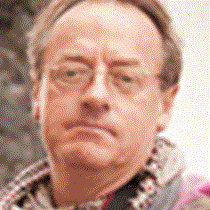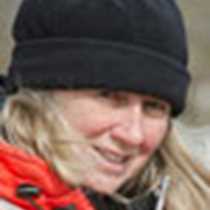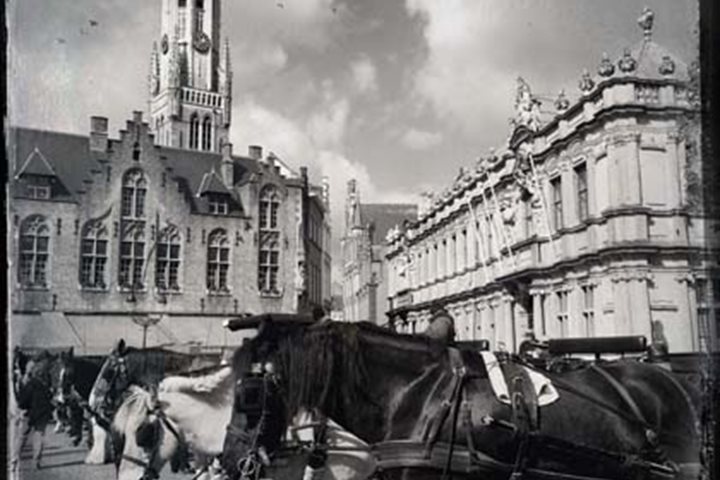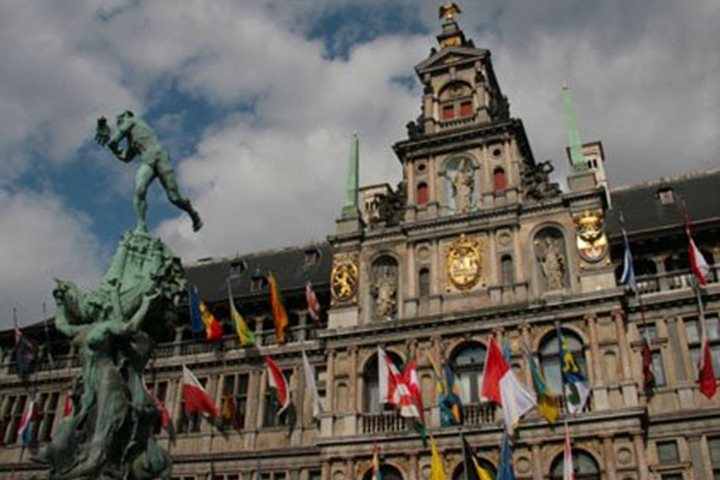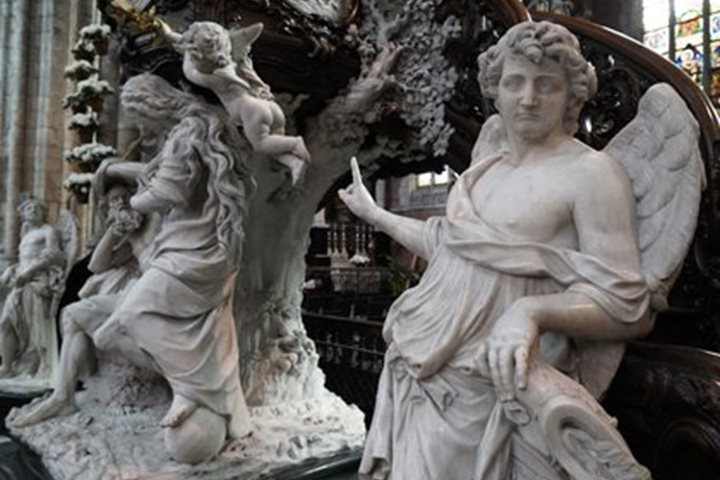Our explorations of the charming city of Amsterdam began this morning with a canal cruise. The city has its origins in a fishing settlement that developed when a dam was constructed on the Amstel River in the 12th century. It quickly expanded as trade developed during the Medieval period to become one of the key ports in Europe. Construction work on the canal system began in the early 17th century in the so-called Dutch Golden Age.
This is a photographers’ paradise. The canals are lined with the erstwhile homes of rich merchants and craftsmen. These attractive tall and narrow buildings are made of brick as a precaution against the hazard of fire. The ground floor housed the merchant’s shop, with living space above while the topmost floor was used for storing of finished goods or raw materials. These latter were hoisted up using a pulley system. Our guides pointed out numerous bicycle parks. Amsterdam is a city of bikes and large numbers are misplaced or lost. Several times a year auctions take place where these so-called “orphan” bikes are sold.
Following our canal cruise we made our way to the Rijksmuseum. There are almost one million objects in its collections and it only last year opened following a 10 year major renovation. This is a most impressive building. Rembrandt is the artist most associated with Amsterdam and his “Nightwatch” is one of the museum’s masterpieces. Other 17th century artists whose works line the walls of the spacious galleries are Vermeer, Van Ruysdael and Frans Hals. “Winter Landscape with Skaters,” which was painted in Amsterdam around 1608 by Heindrick Avercamp, is a must-see. It captures the hustle and bustle of everyday life with over 200 figures of ordinary and well-to-do people going about their business in a village on the banks of a frozen waterway.
Several optional visits were offered for the afternoon. Many went to visit the Van Gogh Museum. This was a veritable visual feast. World-famed works including his “Sunflowers” are on permanent display. His self-portraits are captivating and it is impossible not to be drawn into those troubled, piercing eyes. Others visited the house where the famous Jewish girl diarist, Anne Frank, hid during the Second World War. The photogenic gardens at Keukenhof were also enjoyed by a number of guests.
To top off a remarkably engaging and enjoyable day we were treated to dinner at the 17th century West Indisch Huis. This was the original headquarters of the Dutch West India Company whose economic success manifested in the numerous 17th century canals, public buildings and merchant’s town houses we had seen earlier in the day. On our arrival we were entertained by the highly talented Izaline Calister and her band before being shown to our dining area. Wonderful venue, wonderful company, wonderful food – a fitting end to our day in this remarkably beautiful city.



